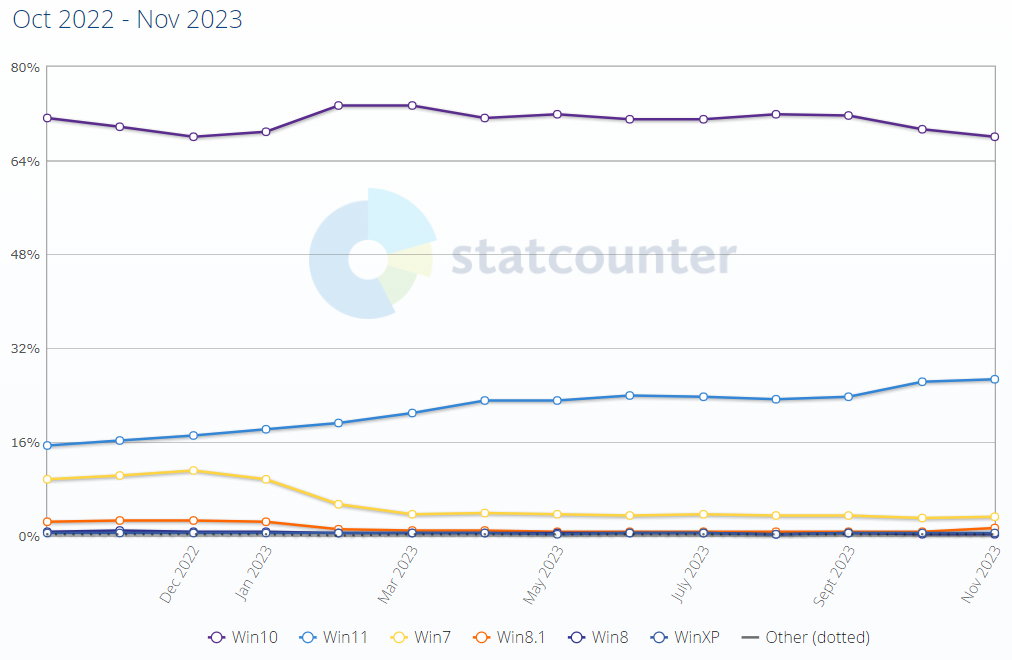Windows 11 market share remains below estimates
- December 1, 2023
- 0
Windows 11’s market share continues well below forecasts, according to data published by Statcounter. It’s still going up almost every month, but its growth is so modest that
Windows 11’s market share continues well below forecasts, according to data published by Statcounter. It’s still going up almost every month, but its growth is so modest that
Windows 11’s market share continues well below forecasts, according to data published by Statcounter. It’s still going up almost every month, but its growth is so modest that it won’t overtake Windows 10 before Windows 12, which many of us expect in 2024.
New month and same story. Analysis of the data and the general assessment of analysts and users two years after the launch of Windows 11 is quite clear: Windows 11 doesn’t fall in love and most users continue with Windows 10 despite the free migration program.
The reasons are known and stem from the increase in minimum hardware requirements and their chaotic management, with changes of course in the order of weeks by Microsoft itself. Added to this are bugs in the updates (which still occur in each one) and delays in delivering features promised at launch. Although it offers a breath of fresh air in visual aspects and user interface, it is nothing more than a “tuned” Windows 10.5 with lower performance and a heavier software burden than Windows 10.
Windows 11 gained half a percentage point in share in November 26.66%. The release of the new version 23H2 also seems to have had no effect and the rise is simply due to the passage of time. It should be remembered that all OEM PCs are sold with Windows 11 and even Microsoft no longer sells Windows 10 licenses. Very little compared to what was expected.
On the other hand, Windows 10 remains in an area unreachable by any other desktop system with a significant quota for everything described in 68%. Other versions (no longer supported by Microsoft), such as the fireproof Windows 7, still have a presence (we assume on old business PCs) with 3.16%, while Windows 8.1 has 1.34%.

Statcounter also publishes global system data and here Google’s Android pretty much dominates. It is clear that the computer desktop is a very important part of global computing, but “only” one of the places where computers and electronic devices are used. Today, more smartphones and tablets are sold than computers, hence the surprise.
Years ago, Android became the first operating system to surpass Windows, and the differences between them persist even with vicissitudes. At the end of November, 38.33% for Android and 30.61% for Windows.
Apple iOS for iPhone mobile phones is third in contention, and the fourth is also from Apple, with macOS for computers running 9.32. To conclude the review, let’s assume that Linux is a little more than 3%, including Google’s Chrome OS.
Source: Muy Computer
Donald Salinas is an experienced automobile journalist and writer for Div Bracket. He brings his readers the latest news and developments from the world of automobiles, offering a unique and knowledgeable perspective on the latest trends and innovations in the automotive industry.